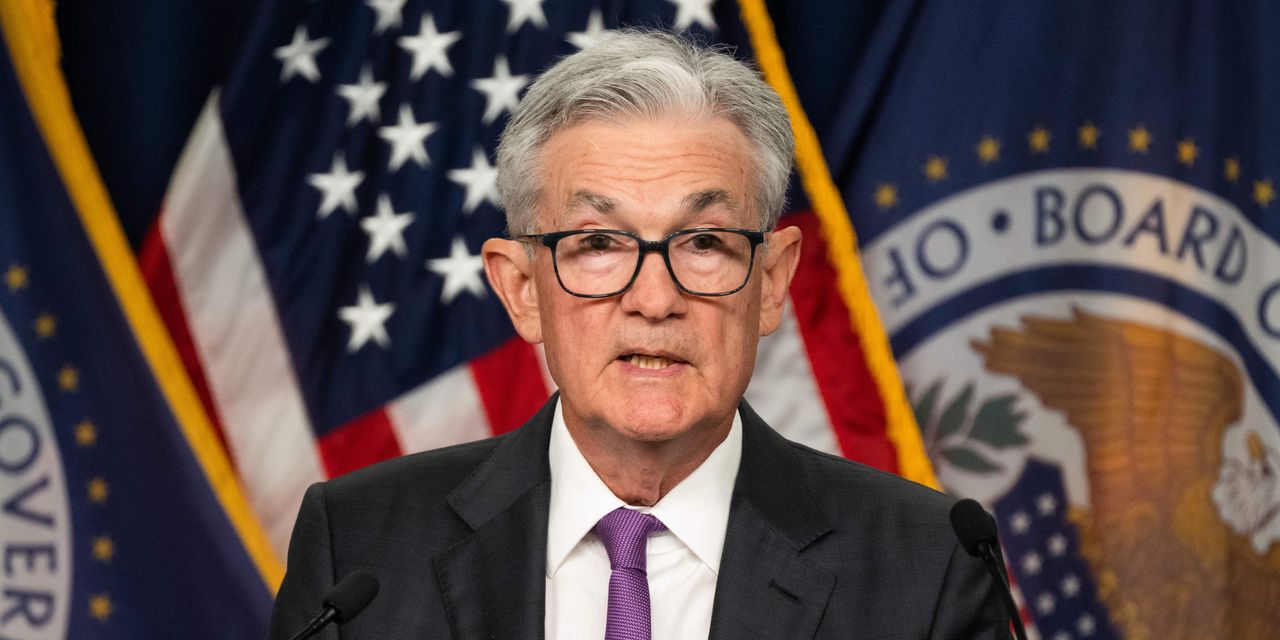Gone are the days of the Federal Reserve offering explicit forward guidance to markets and investors on monetary policy. The central bank is now acknowledging that the U.S. economy is in flux, and that the policy path forward is far from set in stone.
“It is certainly possible that we would raise funds again at the September meeting if the data warranted,” Fed Chairman Jerome Powell told reporters on Wednesday. “And I would also say it’s possible that we would choose to hold steady at that meeting.”
In other words: Anything can happen.
Powell kept driving home the message that the Fed may raise interest rates further this year, even though inflation is now less than one-third its peak level a year ago, and the central bank already has slowed the pace of monetary policy tightening.
Rather than celebrate any progress made toward reining in inflation, he discounted much of it as a reversal of pandemic-specific phenomena. He acknowledged strength in consumer demand and rising consumer confidence, noting that the Fed will be “watching that carefully.” And he emphasized that the central bank’s job is far from finished.
“Core inflation is still pretty elevated,” Powell said. “So we think we need to stay on task.”
Powell’s comments amounted to a warning shot to investors who have been betting that the central bank would soon end its tightening cycle. Until a few months ago, many had expected to see rate cuts this year.
Some investors appeared to shrug off Wednesday’s press conference in much the same way: Initial stock market activity suggested that the bulls were in control, noted Chris Zaccarelli, chief investment officer for the Independent Advisor Alliance. The Dow Jones Industrial Average gained for the 13th consecutive day.
“The narrative that the Fed is done—or close to done—seems to be winning out,” Zaccarelli said.
But while it might be easy to chalk Powell’s tough tone up to simple posturing—a bid to keep financial conditions from loosening prematurely—economic data suggests his caution is warranted. Investors would do well to recognize that there could be a need for tighter policy by the time the Fed meets again on Sept. 19-20.
Consumer sentiment is soaring, with the Conference Board’s Consumer Confidence Index notching a two-year high earlier this week. In combination with wage gains now outpacing inflation, it could keep consumer spending and demand elevated. It is a sign of a healthy economy, but one that might need to see a more restrictive monetary policy to slow price growth.
The housing market, meanwhile, appears to have bottomed out and is now regaining strength. While housing is one of the more interest rate-sensitive areas of the economy and had borne the brunt of earlier rate hikes, Powell acknowledged on Wednesday that activity in the sector had “picked up somewhat.” Further strength there could suggest a need for further policy tightening.
The Fed’s inflation fight is only getting more difficult from here, and relief in the area where Powell most wants to see price growth slow—the non-housing core services sector—has so far proven elusive. Reining in inflation in so-called supercore services will likely require a slowdown in the labor market and in wage growth—and that could require another tap on the brakes from the Fed.
“Labor market conditions broadly are going to be an important part of getting inflation back down,” Powell said Wednesday. “And that’s why we think we need some further softening in labor market conditions.”
The Fed will get to see a bevy of economic data before its next policy meeting, including two jobs reports, two consumer-price-index inflation reports, a set of comprehensive wage data for the second quarter and a fresh release on economic growth..
Meanwhile, though, don’t dismiss the idea that the central bank has another rate hike up its sleeve. As they say: It ain’t over until it’s over.
Write to Megan Cassella at [email protected]
Read the full article here





